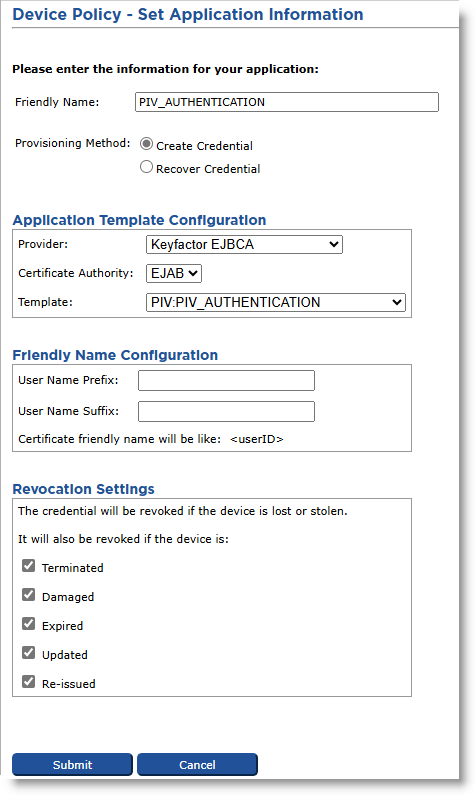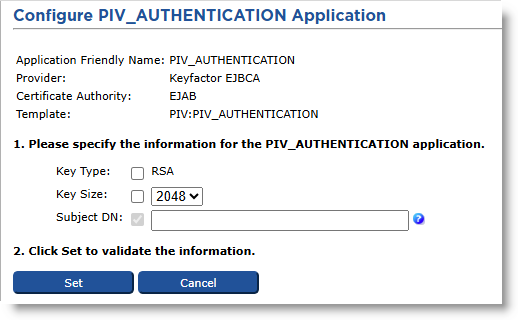Creating the Device Policy for Keyfactor EJBCA Certificates
This section illustrates how to create a device policy that issues Keyfactor EJBCA certificates onto the user’s device. For more information about creating a device policy, refer to Creating a Device Policy.
To create a device policy, perform the following tasks:
-
Log on to the ActivID CMS Operator Portal with an ActivID CMS Administrator certificate.
-
Click the Configuration tab, and then click Policies.
-
Depending upon the PKI applications to be used, add a new device policy.
-
Click Next, and then add the corresponding PKI applications.
-
Click the Configure button associated with the PKI application to display the Device Policy - Set Application Information page:

-
In the Friendly Name field, enter a valid, descriptive name for the certificate used for the device policy.
-
Leave the Provisioning Method set to Create Credential.
Important: In ActivID CMS 6.3, certificate escrow and recovery are not supported. As a result, you must not set the Provisioning Method to Recover Credential. -
In the Provider drop-down menu, select Keyfactor EJBCA.
-
In the Certificate Authority drop-down menu, select a Certificate Authority host name.
-
For Template, select the template corresponding to the PKI application (for example, one of the four available PIV Personal Identity Verification (technical standard of "HSPD-12") templates).
Note: The End-Entity profile / Certificate profile pair (separated by a colon) is used as a full template name (see End Entity and Certificate Profiles for details). -
Click Submit.

- Verify that the required fields contain appropriate information.
-
Click Set.





